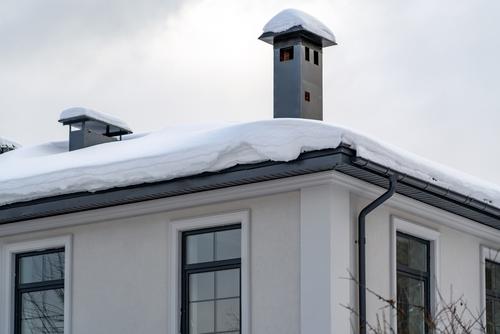
Gutters may not be the stars of the architectural show, but they play a crucial role in maintaining the integrity and protection of any building. When gutters are efficiently designed and well-maintained, they can prevent a host of issues, including foundation damage, basement flooding, and erosion. The key to reaping the full benefits of your gutter system lies in maximizing their efficiency. Here are several essential tips for ensuring your gutters remain in top-notch condition to safeguard your home against the ravages of water damage.
1. Choose the Right Type and Material
The first step towards efficient gutter performance is selecting the optimal type and material for your specific needs. There are several popular options available, including seamless aluminum, copper, and vinyl, each with its pros and cons. Seamless gutters are less prone to leaks and can be custom-fit to your home’s dimensions, while copper gutters are not only durable but also add an attractive and sophisticated look. Vinyl is a versatile and cost-effective material, but it may not withstand severe weather conditions as well as other metals. Consider factors like climate, maintenance requirements, and budget before making a decision.
Understanding Gutter Types
- K-Style Gutters: These gutters resemble the letter K when viewed from the side and are the most common type. They offer both a decorative and functional option and can hold more water compared to a half-round design.
- Half-Round Gutters: More traditional, these gutters have a curved bottom that allows water to flow more easily, making them a good choice for areas with heavy rainfall or for larger roof structures.
- Box Gutters: Built into the roof structure, these gutters are less visible and can give a building a clean, unbroken roofline. They require a skilled installer and regular maintenance to prevent blockages.
2. Proper Sizing and Installation
One of the most significant factors in ensuring gutter efficiency is correct sizing and installation. Gutters that are too small will quickly overflow during heavy rain, while ones that are too large may not have the required pitch to drain effectively. It’s important to have a professional evaluate your home’s specific requirements to determine the ideal gutter size and pitch. Improper installation, such as loose spikes or incorrect sloping, can lead to sagging, which prevents water from draining properly, and can even result in structural damage to your home.
Sizing Your Gutters
- Calculate Roof Area: The size of your roof area and the amount of rainfall it experiences will dictate how much water your gutters need to manage.
- Consider Downspout Size and Placement: Ensure downspouts are placed at optimal distances to move water quickly away from the foundation. Downspouts should be placed every 30 to 40 feet of gutter length.
- Account for Roof Pitch: Steeper roofs can shed water more quickly, requiring larger gutters to handle the flow.
3. Regular Cleaning and Maintenance
Gutters are your home’s first line of defense against water damage, but they can only fulfill this role effectively if they are properly maintained. Clogged gutters can lead to a variety of problems, including ice dams, insect infestations, and even damage to your roof from the weight of the debris. Make it a habit to clean your gutters at least twice a year, and consider installing gutter guards to reduce the frequency of cleanings.
The Importance of Maintenance
- Inspect for Damage: Look for leaks, rust, and sagging during your cleanings. Addressing these issues promptly can prevent more significant problems down the line.
- Trim Trees: Overhanging branches can deposit leaves and other debris into your gutters, causing clogs. Trim back any branches that are close to or over your roof line.
- Check Seams and Joints: Check that all seams and joints are tightly sealed. Over time, the caulking or sealant can deteriorate, leading to leaks and inefficiency.
4. Ensure Proper Downspout Functionality
Downspouts are the part of your gutter system responsible for directing water away from your home’s foundation. Without them, even the best gutters are virtually useless. Ensure that your downspouts are clear of debris and are directed at least 5 feet away from your home to prevent pooling water and damage to the foundation. You can use splash blocks, downspout extensions, or underground piping to achieve this.
Downspout Maintenance Tips
- Use Pressure Washers Sparingly: High-pressure washing near downspouts can damage them. Use a low-pressure setting or hand tools whenever possible.
- Install a Gutter Outlet Strainer: This can prevent large debris from entering the downspouts and causing clogs.
- Check Outlet and Elbows for Clogs: Regularly inspect these areas during your gutter cleanings.
5. Repair Leaks and Sagging Promptly
Even with the best maintenance, gutters can sometimes develop leaks and sag over time. It’s essential to repair these issues as soon as they arise. Leaking gutters can lead to soil erosion and undermine your home’s foundation, while sagging gutters cannot drain properly and allow water to accumulate on your roof and siding.
Repair Tips
- Seal Leaks Effectively: Use a waterproof sealant designed for your gutter’s material. Clean the area thoroughly before applying the sealant.
- Reattach Loose Gutters: If you spot a section of gutter that is pulling away from the house, it needs to be reattached properly to ensure proper functionality.
- Use Brackets for Support: In areas where gutter weight is a concern, consider placing additional brackets for support and to prevent sagging.
6. Monitor for Signs of Damage Year-Round
Be proactive about the health of your gutter system by keeping an eye out for signs of damage throughout the year. Stains on the exterior of your home, peeling paint, and water in your basement can all point to issues with gutter functionality. Regular visual inspections can help you catch potential problems early and prevent costly repairs in the future.
Signs to Watch For
- Sagging or Leaning Gutters: These indicate that the system is not properly anchored or that the supports are inadequate.
- Water Marks Under Gutters: This can indicate overflow or leak issues and should be addressed promptly.
- Rust or Oxidation: Particularly if you have metal gutters, these signs can indicate that it’s time for repairs or replacement.
7. The Benefits of Professional Gutter Maintenance
Some aspects of gutter maintenance are best handled by professionals. Consider hiring a gutter maintenance service at least once a year to perform a comprehensive inspection, cleaning, and repairs as needed. Experts can often identify potential problems that are not immediately obvious to the untrained eye and can give you peace of mind that your gutter system is functioning as it should.
Professional Services
- Comprehensive Cleaning: Professionals can power wash your gutters, removing built-up debris and grime that can impede water flow.
- Annual Inspections: Service providers can conduct in-depth examinations of your gutter system and provide detailed reports on its condition.
- Repair and Replacement: They can handle complex repairs, such as resealing seams or replacing sections of the gutter system that are beyond repair.
By following these guidelines and staying proactive in your gutter maintenance, you can extend the life of your gutters and ensure that your home is protected against water damage for years to come. Remember, a little care and attention today can save you a lot of hassle and expense tomorrow.

